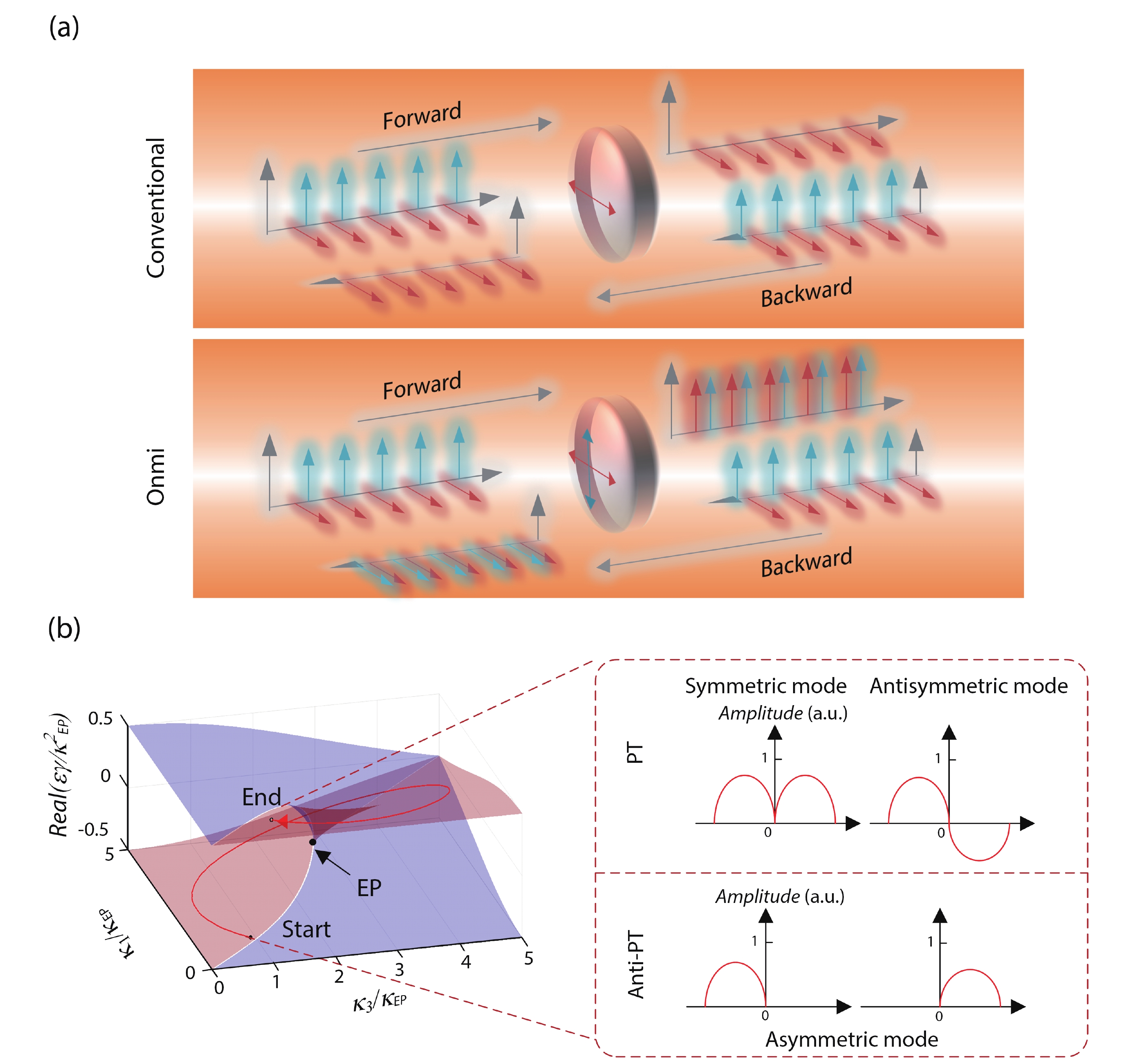Fig. 1.
(Color online) (a) The difference of mode distribution between PT symmetric and anti-PT symmetric system. (b) The compare between conventional polarizer and chiral polarizer.
| Citation: |
Chengwei Qiu. Breaking the symmetry of polarizers[J]. Journal of Semiconductors, 2022, 43(5): 050401. doi: 10.1088/1674-4926/43/5/050401
****
C W Qiu. Breaking the symmetry of polarizers[J]. J. Semicond, 2022, 43(5): 050401. doi: 10.1088/1674-4926/43/5/050401
|
-
References
[1] Özdemir Ş K, Rotter S, Nori F, et al. Parity–time symmetry and exceptional points in photonics. Nat Mater, 2019, 18, 783 doi: 10.1038/s41563-019-0304-9[2] Doppler J, Mailybaev A A, Böhm J, et al. Dynamically encircling an exceptional point for asymmetric mode switching. Nature, 2016, 537, 76 doi: 10.1038/nature18605[3] Yoon J W, Choi Y, Hahn C, et al. Time-asymmetric loop around an exceptional point over the full optical communications band. Nature, 2018, 562, 86 doi: 10.1038/s41586-018-0523-2[4] Liu Q J, Li S Y, Wang B, et al. Efficient mode transfer on a compact silicon chip by encircling moving exceptional points. Phys Rev Lett, 2020, 124, 153903 doi: 10.1103/PhysRevLett.124.153903[5] Li A D, Dong J J, Wang J, et al. Hamiltonian hopping for efficient chiral mode switching in encircling exceptional points. Phys Rev Lett, 2020, 125, 187403 doi: 10.1103/PhysRevLett.125.187403[6] Hassan A U, Zhen B, Soljačić M, et al. Dynamically encircling exceptional points: Exact evolution and polarization state conversion. Phys Rev Lett, 2017, 118, 093002 doi: 10.1103/PhysRevLett.118.093002[7] Lopez-Galmiche G, Lopez Aviles H E, Hassan A U, et al. Omnipolarizer action via encirclement of exceptional points. Conference on Lasers and Electro-Optics, 2020, FM1A.3[8] Khurgin J B, Sebbag Y, Edrei E, et al. Emulating exceptional-point encirclements using imperfect (leaky) photonic components: Asymmetric mode-switching and omni-polarizer action. Optica, 2021, 8, 563 doi: 10.1364/OPTICA.412981[9] Sun S H, He M B, Xu M Y, et al. Hybrid silicon and lithium niobate modulator. IEEE J Sel Top Quantum Electron, 2021, 27, 1 doi: 10.1109/JSTQE.2020.3036059[10] Zhou H L, Zhao Y H, Xu G X, et al. Chip-scale optical matrix computation for PageRank algorithm. IEEE J Sel Top Quantum Electron, 2020, 26, 1 doi: 10.1109/JSTQE.2019.2943347[11] Shen Y, Harris N C, Skirlo S, et al. Deep learning with coherent nanophotonic circuits. Nat Photonics, 2017, 11, 441 doi: 10.1038/nphoton.2017.93[12] Wei Y X, Zhou H L, Chen Y T, et al. Anti-parity-time symmetry enabled on-chip chiral polarizer. Photon Res, 2021, 10, 76 doi: 10.1364/PRJ.444075[13] Zhang X L, Jiang T, Chan C T. Dynamically encircling an exceptional point in anti-parity-time symmetric systems: Asymmetric mode switching for symmetry-broken modes. Light Sci Appl, 2019, 8, 88 doi: 10.1038/s41377-019-0200-8 -
Proportional views






 DownLoad:
DownLoad:














